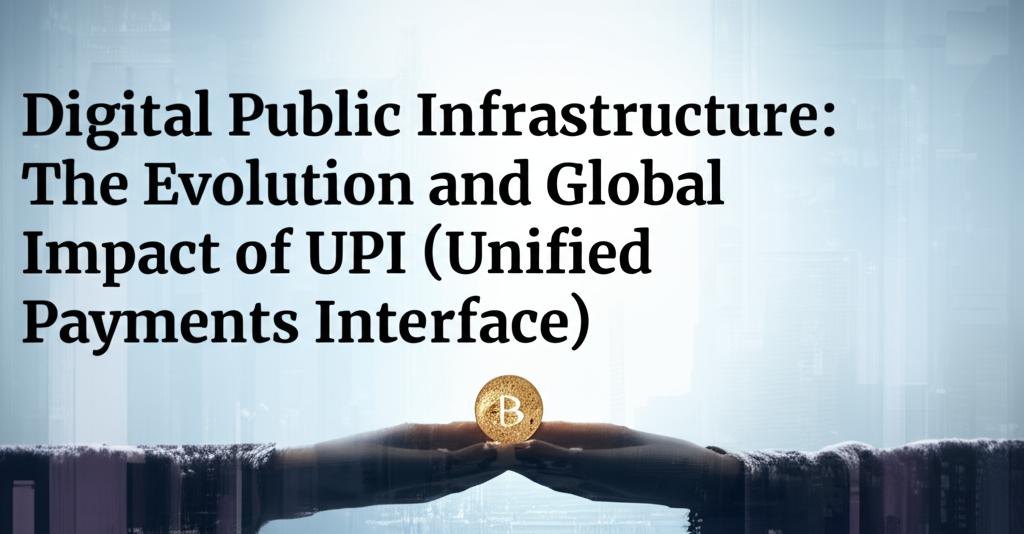Unified Payments Interface (UPI) has fundamentally reshaped India's financial landscape and is increasingly making its mark globally. Launched in 2016 by the National Payments Corporation of India (NPCI), UPI is a real-time payment system that allows users to link multiple bank accounts to a single mobile application, enabling instant fund transfers, merchant payments, and peer-to-peer transactions.
Evolution and Growth in India:UPI's journey began as part of India's broader vision to modernize its payment systems and promote digital transactions. Before UPI, India's payment ecosystem was heavily reliant on cash. UPI revolutionized this by offering an easy-to-use, fast, and largely free (for end-users) method for digital payments. Its open, technology-agnostic architecture, user-friendly interfaces, and features like QR code-based payments and direct integration with numerous third-party apps (like Google Pay, PhonePe, and Paytm) have been key to its widespread adoption.
The platform has seen phenomenal growth. By October 2024, UPI processed a historic 16.58 billion financial transactions in a single month. As of November 2024, it was processing over 15 billion transactions monthly. While UPI dominates in terms of transaction volume, a significant portion of these are small-ticket transactions, indicating its deep penetration into everyday purchases for a vast user base. Projections suggest UPI could process 1 billion transactions daily by 2026-27.
The impact on India has been profound:
- Financial Inclusion: UPI has brought millions of unbanked and underbanked individuals into the formal economy. It has empowered small businesses, street vendors, and migrant workers with an efficient way to manage payments.
- Reduced Cash Dependency: It has significantly contributed to India's shift towards a "less cash" society, promoting transparency and accountability.
- Economic Growth: By streamlining transactions and reducing costs, UPI is considered a catalyst for economic growth. One estimate suggests UPI saved the Indian economy approximately $67 billion since its inception.
- Behavioral Shift: UPI has fostered a significant behavioral change, with digital payments becoming commonplace for even micro-transactions.
UPI's success has not gone unnoticed internationally. It is increasingly viewed as a model for digital public infrastructure worldwide.
- International Presence: As of early 2025, UPI is operational in several countries, including the UAE, Singapore, Bhutan, Nepal, Sri Lanka, France, and Mauritius. Its entry into France marked its first foray into Europe. NPCI International Payments Limited (NIPL), a subsidiary of NPCI, is actively working to expand UPI's reach, targeting an additional four to six countries by 2025, with a focus on regions popular with Indian tourists like Qatar, Thailand, and other parts of Southeast Asia.
- Cross-Border Transactions: The global expansion aims to enable seamless cross-border payments for Indian travelers and businesses. Linkages, like the one between UPI and Singapore's PayNow, are prime examples of cross-border payment innovation, significantly reducing remittance costs. It is estimated that global adoption of UPI-like systems could drastically cut remittance costs. In 2024, the Indian diaspora sent nearly US$129 billion to India, with UPI playing a role.
- Inspiring Other Nations: Over 30 countries are reportedly exploring UPI and Aadhaar-inspired frameworks to address their own financial inclusion and governance challenges. Countries like Brazil, Indonesia, the Philippines, and Morocco are implementing or piloting similar systems. NIPL is also collaborating with countries like Peru, Namibia, and Trinidad and Tobago to help them develop their own domestic real-time payment systems.
- Global Standard: India now accounts for a significant share (around 49% as of 2023, according to one report) of global real-time payment transactions, positioning UPI as a potential global standard.
- Interoperability: Allows transactions across different banks and payment service providers seamlessly.
- Real-time Settlement: Funds are transferred instantly.
- Low Cost: Transactions are generally free for users and low-cost for merchants.
- Open Architecture: Enables innovation and integration by third-party application providers.
- Ease of Use: Simple interface, QR code scanning, and mobile number-based payments contribute to user-friendliness.
The evolution of UPI is ongoing, with several potential developments on the horizon:
- Increased User Base: India aims to onboard an additional 200-300 million users, including through initiatives like delegated accounts for those without traditional banking access.
- New Features: Enhancements like multilingual interfaces, chat-based transactions, voice-enabled payments, and integration of credit lines are being explored or implemented. The integration of RuPay credit cards with UPI allows users to make payments through their credit lines.
- Emerging Technologies: AI-driven fraud detection, blockchain integration for enhanced security, and IoT-enabled payments (e.g., via wearables and smart devices) are anticipated.
- Central Bank Digital Currency (CBDC): The expansion of India's Digital Rupee could work in tandem with UPI, offering a government-backed digital alternative to fiat currency.
- Sustainability Discussions: While the zero-cost model for users has driven adoption, discussions around small transaction fees are ongoing to ensure long-term viability for payment companies, though this could impact user growth if implemented.
Despite its success, UPI faces challenges:
- Cybersecurity Threats: The rise in digital transactions also brings an increase in cyber fraud.
- Rural Adoption: Digital literacy and consistent internet access remain barriers in some rural areas.
- Merchant Acceptance: While widespread, some small businesses may still prefer cash due to perceived transaction costs or other factors.
- Scalability for Cross-Border Transactions: Ensuring seamless, secure, and compliant international operations remains a key focus.
In conclusion, UPI has transformed from a domestic payment solution into a globally recognized Digital Public Infrastructure. Its journey highlights the power of open, interoperable, and user-centric digital platforms in fostering financial inclusion, economic growth, and setting new standards for the future of payments worldwide.

